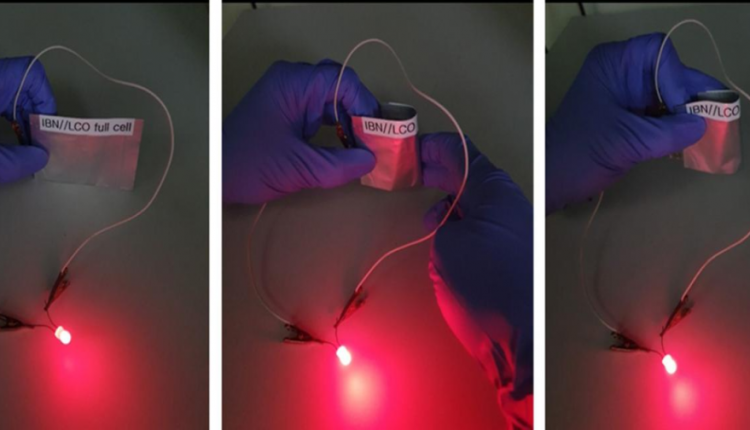Flexibles, wearables, foldable phones, and 5G devices would all be well served by high capacity, flexible batteries that can be embedded in wristbands and can share wireless power sharing. So far we’ve made progress on everything but the high capacity portion of this equation. Recently, however, a research team from Korea developed a monolithic electrode that can replace heavy copper collectors and enable development of a flexible battery with high capacity.
Professor Soojin Park and his team at Pohang University of Science & Technology (POSTECH) have successfully developed a flexible battery with a thin and three-dimensional organic electrode in collaboration with Korea Institute of Materials Science. They were able to lower the battery weight 10 times more than the conventional copper collector by using a three-dimensional copper collector. Instead of using a graphite anode, they utilized organic materials and increased the battery’s energy density at least four times.
Electrical conductivity of an organic material is low and there was no solution to integrate collector and organic material. For this reason, it had not been possible to demonstrate a monolithic electrode with organic materials before their study. The research team studied a new way to replace a current collector that makes a battery heavy and a graphite anode with low energy density in order to lower the weight of battery innovatively.
The team produced a three-dimensional structure with high electrical conductivity by using single-walled carbon nanotube (SWCNT) aerogels. Here, they constructed thin monolithic organic electrodes by coating a nanometer-scale imide-based network (IBN) organic material.
The three-dimensional monolithic electrodes coated with 8 nm thin and adjustable thick organic IBN layers delivered capacity of up to 1550 mA h g-1 and could be recharged more than 800 times. These electrodes were coated with organic materials. Despite their poor intrinsic electrical conductivity, they had high electrical conductivity and they also demonstrated improved electrochemical performance of the rechargeable battery by helping fast transfer of lithium through abundant redox-active sites. Moreover, thickness of coated organic materials can be controlled easily and they were able to greatly improve the current density of the organic electrode.
The newly developed electrode can replace the metal-based collector and this enables development of a light and flexible rechargeable battery which later can be applied to next generation wearables, flexible devices, telecommunications, and electronic vehicles.
Professor Soojin Park said, “We can lower the weight of a rechargeable battery enormously by using this newly developed monolithic electrode with SWCNT organic materials. This can overcome the limitations of the conventional rechargeable battery and can realize flexibility and weight lightening of an organic battery.”

